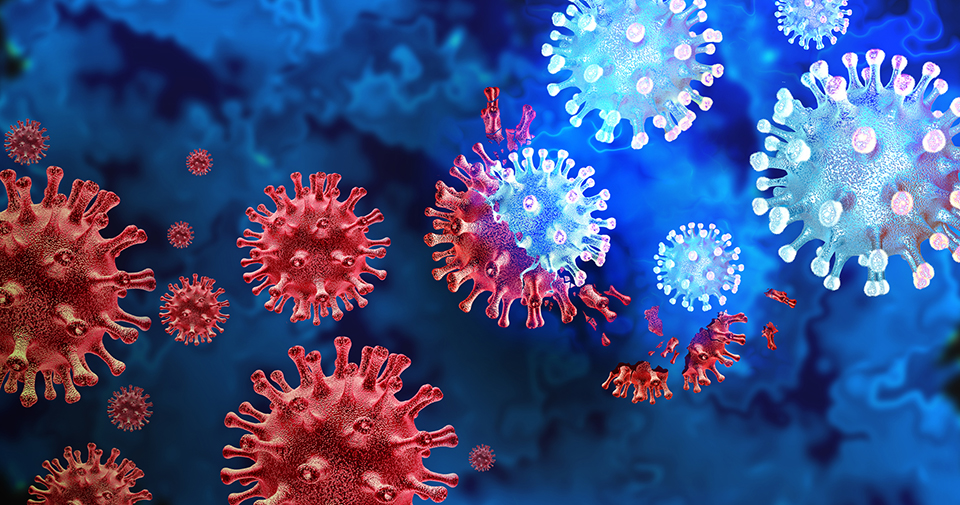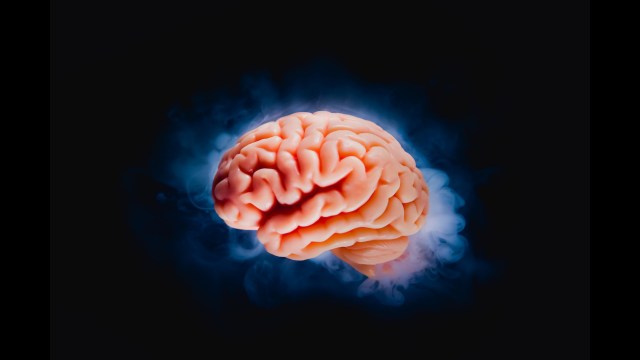It begins quietly. A cough in the marketplace, a fever dismissed as seasonal flu, a few hospital beds filling up faster than usual. The early signals of a pandemic are often unremarkable, barely registering in the noise of everyday life. But then, like a spark meeting dry grass, the disease catches and spreads—first in homes and hospitals, then across cities, countries, and entire continents.
Pandemics are not new. They are as old as civilization itself. From ancient plagues to modern viruses, the story of pandemics is also the story of human connectivity, migration, trade, war, and resilience. But how exactly do they spread? Why do some viruses leap from animals to humans? What turns a local outbreak into a global catastrophe?
To answer these questions, we must journey through time—uncovering how pandemics have shaped, shaken, and sometimes shattered the world—and what the COVID-19 pandemic has revealed about our modern vulnerabilities and strengths.
Understanding the Mechanism of a Pandemic
At its core, a pandemic is an infectious disease outbreak that spreads across countries or continents, usually affecting a large number of people. Pandemics are caused by pathogens—viruses, bacteria, or other microbes—that are capable of human-to-human transmission.
But for a pandemic to occur, several specific conditions must align. First, the pathogen must be novel, or at least new enough that most people lack immunity. Second, it must be easily transmissible—either through the air, bodily fluids, contaminated surfaces, or vector organisms like mosquitoes. Finally, it must be capable of sustained transmission, meaning that one infected person can infect multiple others.
This chain of events is often set into motion by a phenomenon called “spillover”: when a pathogen jumps from an animal host to humans. This can happen through hunting, farming, wildlife trade, or simply living in close proximity to animals. Many pandemics—including HIV, Ebola, and COVID-19—began this way.
Once the spillover occurs, it becomes a race between the disease and our ability to contain it. Unfortunately, history shows that the disease often wins—at least at first.
The Ancient World: Plagues Without Borders
Long before the age of airports and high-speed trains, pandemics traveled on foot, by horse, and by ship. Yet even in these slower times, diseases could devastate empires.
One of the earliest recorded pandemics is the Plague of Athens (430 BCE), which struck during the Peloponnesian War. Carried in by sailors, it ravaged the overcrowded city, killing tens of thousands—including the statesman Pericles. Historians still debate the exact disease, but its impact was clear: it weakened Athens politically and militarily.
Then came the Antonine Plague (165-180 CE), possibly smallpox, brought to Rome by soldiers returning from the East. It decimated the Roman army, killed an estimated five million people, and may have contributed to the empire’s gradual decline.
In the sixth century, the Plague of Justinian, caused by the bacterium Yersinia pestis, exploded across the Byzantine Empire. Ships carrying grain from Egypt also carried rats and fleas—the real vectors of the disease. Constantinople lost nearly half its population in a matter of months.
These ancient pandemics spread through trade routes, armies, and migration. Though they lacked the speed of modern pandemics, their impact was profound and long-lasting.
The Black Death: Terror on a Continental Scale
No discussion of pandemics is complete without the Black Death—the deadliest pandemic in human history. Between 1347 and 1351, it swept across Europe, Asia, and North Africa, killing an estimated 75 to 200 million people.
The Black Death was caused by Yersinia pestis, the same bacterium responsible for the Justinian Plague, but this time its reach was far greater. It traveled along the Silk Road and via merchant ships, often reaching new towns before people even knew it existed.
Fleas carried the bacteria from rats to humans, and once human-to-human transmission took hold—especially through the pneumonic form—the disease became virtually unstoppable.
The symptoms were horrifying: high fevers, blackened skin from internal bleeding, buboes (swollen lymph nodes), and rapid death, sometimes within 24 hours.
The social consequences were equally dramatic. Entire villages vanished. Labor shortages led to economic upheaval. Religious fervor intensified. Pogroms and scapegoating led to the persecution of Jews and outsiders. It also changed art, philosophy, and literature—bringing a grim realism to European consciousness.
But even amidst the chaos, some changes paved the way for future progress. Workers gained more bargaining power. Medical knowledge, though rudimentary, began to improve. The pandemic marked the end of feudalism and the beginning of a more modern economy.
The Columbian Exchange: When Disease Met the New World
When Europeans arrived in the Americas in the late 15th and early 16th centuries, they brought more than ships and swords. They brought diseases—smallpox, measles, influenza, and typhus—that Native Americans had never encountered.
With no prior exposure, the indigenous population lacked immunity. The result was catastrophic. In some regions, up to 90% of native populations perished within a generation. Entire civilizations, like the Inca and Aztec empires, crumbled under the dual assault of war and disease.
This was not a pandemic in the traditional sense—it did not spread globally from a single outbreak—but it was one of the most devastating biological events in human history.
It also marked the beginning of globalized disease transmission, as travel between continents became more frequent. The world had truly become interconnected by microbial traffic.
The Flu That Changed the World: 1918
In the final year of World War I, another invisible enemy joined the battlefield: the 1918 influenza pandemic—often called the Spanish Flu. But this name is a misnomer; the virus likely originated in Kansas or France, and only appeared “Spanish” because Spain’s uncensored press was the first to report on it openly.
What made the 1918 flu so terrifying was its combination of speed, lethality, and age targeting. It killed not just the elderly and infants, but also healthy young adults—those in the prime of life. In less than two years, it infected one-third of the global population and killed an estimated 50 million people.
Troop movements, crowded trenches, and poorly ventilated barracks turned soldiers into vectors. Cities with public celebrations or parades saw massive spikes in death. Attempts to downplay the virus for morale or economic reasons led to unnecessary deaths.
Yet the 1918 pandemic also taught us crucial lessons: about public health, about the importance of communication, and about the need to act decisively in the face of exponential spread.
The Modern Era: Medicine, Mistakes, and Microbes
The 20th century saw a string of epidemics and regional pandemics—Asian Flu (1957), Hong Kong Flu (1968), HIV/AIDS (emerging in the 1980s), and more recently, SARS (2002), MERS (2012), Ebola (2014), and Zika (2015). Each offered its own lessons.
HIV/AIDS was initially misunderstood and stigmatized, labeled as a disease of marginalized groups. It wasn’t until years later that public health campaigns, antiretroviral treatments, and global cooperation helped bring it under control. Still, it has claimed over 40 million lives to date.
SARS (Severe Acute Respiratory Syndrome) emerged in China and spread to several countries in 2002-2003. It was caused by a coronavirus, spread through droplets, and had a relatively high mortality rate. But because symptoms appeared quickly and transmission required close contact, it was eventually contained.
Ebola, with its gruesome symptoms and high fatality rate, struck fear globally—but it was mostly limited to certain African regions. It taught us the importance of early intervention, surveillance, and trust in health systems.
Each of these outbreaks showed us different pieces of the pandemic puzzle: the importance of science, transparency, public behavior, and international collaboration.
But none would prepare us for what came in 2019.
COVID-19: The Pandemic of Our Time
It started, like so many others, with a cluster of pneumonia cases in a city few outside China had heard of: Wuhan. The year was 2019. The pathogen: a novel coronavirus, later named SARS-CoV-2, causing the disease known as COVID-19.
What made COVID-19 different wasn’t just its global reach—it was the way it exposed every crack in our modern systems. It revealed the cost of delay, the power of misinformation, the fragility of supply chains, and the disparities in healthcare access.
COVID-19 spread through respiratory droplets, aerosols, and contaminated surfaces. Its symptoms ranged from mild cough to fatal respiratory failure. It infected young and old, though the elderly and those with pre-existing conditions were most vulnerable.
Lockdowns, masks, social distancing, and eventually vaccines became our tools of defense. But the virus mutated, producing variants like Delta and Omicron, each more transmissible than the last.
By early 2025, COVID-19 had caused over 7 million confirmed deaths worldwide—and likely many more uncounted. It crashed economies, overwhelmed hospitals, changed education, altered mental health, and redefined work and social life.
But it also brought unprecedented scientific collaboration. Vaccines were developed in record time. mRNA technology proved a game-changer. Public health once again took center stage.
Lessons Learned from COVID-19
If the pandemic has taught us anything, it’s that preparedness is everything. We learned that:
- Early action saves lives. Delay is deadly.
- Transparent communication builds trust and improves compliance.
- Misinformation can be as dangerous as the virus itself.
- Global problems require global solutions. No one is safe until everyone is safe.
- Investment in science, public health infrastructure, and disease surveillance is not optional—it’s existential.
We also learned the power of community. From doctors and nurses risking their lives, to neighbors checking on the elderly, to scientists racing to develop vaccines, humanity showed its capacity for courage and cooperation.
The Science of Spread: Understanding Transmission
Pandemics spread through specific modes of transmission. For COVID-19 and influenza, the primary modes are:
- Airborne droplets: Released when an infected person coughs, sneezes, or talks.
- Aerosols: Smaller particles that linger in the air, especially in poorly ventilated spaces.
- Fomites: Contaminated surfaces that transfer the virus when touched.
- Close contact: Including hugs, handshakes, and shared living spaces.
Other pandemics, like HIV or Ebola, spread through bodily fluids. Mosquito-borne diseases (like Zika or dengue) depend on vector ecology.
Understanding these modes helps in devising countermeasures: masks, handwashing, quarantine, ventilation, vaccination, and vector control.
Why Pandemics Accelerate Today
Modern pandemics spread faster and farther than ever before. Why?
- Global travel: A person can fly from one continent to another in hours, carrying pathogens unknowingly.
- Urban density: Cities with millions of people are ideal breeding grounds for transmission.
- Wildlife trade and habitat destruction: Humans are coming into closer contact with animals, increasing spillover risk.
- Climate change: Altered ecosystems are expanding the range of disease-carrying species.
- Misinformation: Social media can amplify harmful myths and undermine public health efforts.
These factors mean that while medicine has advanced, our vulnerabilities have grown too.
Preparing for the Next Pandemic
COVID-19 won’t be the last pandemic. But we can be better prepared.
This means building:
- Early warning systems for pathogen detection.
- Stockpiles of essential medical supplies.
- Robust public health infrastructure.
- Global agreements for information sharing and coordinated response.
- Public education on science and disease.
It also means fostering trust. Between governments and citizens. Between scientists and the public. Between nations.
Because the next pandemic may spread faster. It may be deadlier. Or it may be just another chance—for us to prove we’ve learned.
Conclusion: The Past Is Prologue
Pandemics are not random acts of nature. They are predictable, recurrent events in human history. They follow patterns—of emergence, denial, panic, response, and recovery.
From the Black Death to COVID-19, every pandemic has taught us something—about science, society, and ourselves. Each one has revealed both our fragility and our resilience.
The question is not whether another pandemic will come.
The question is: will we be ready?






